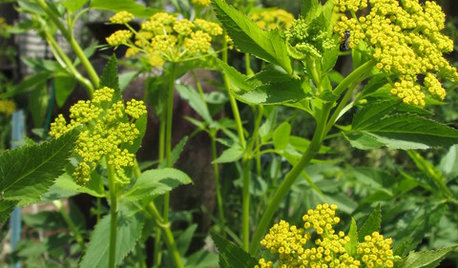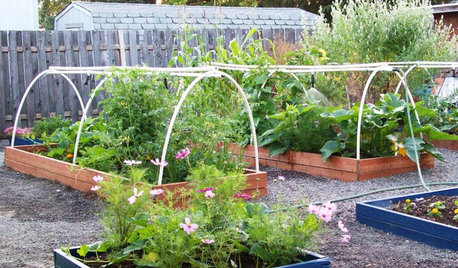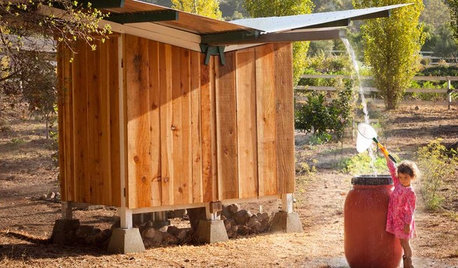'Raising' Butterflies
suzycentri
13 years ago
Related Stories

GARDENING FOR BUTTERFLIESBe a Butterfly Savior — Garden for the Monarchs
Keep hope, beauty and kindness alive in the landscape by providing a refuge for these threatened enchanters
Full Story
FALL GARDENINGWhat Monarch Butterflies Taught Me About Garden Design
Thinking like a butterfly leads to fresh perspectives in the garden and in life
Full Story
GARDENING GUIDES6 Plants That Beat Butterfly Bush for the Wildlife Draw
It's invasive, a nonnative and a poor insect magnet. Check out these better alternatives to butterfly bush in the garden
Full Story
GARDENING FOR BUTTERFLIESButterfly Gardening: Delight the Eyes With Living Sculptures
Surprise and thrill with a garden that attracts magical winged creatures, bringing color, movement and life
Full Story
GARDENING GUIDESGreat Design Plant: Autumn Sage Brings Color and Butterflies
Whether you live in the arid desert or the humid South, you'll likely find this deer-resistant beauty as irresistible as winged creatures do
Full Story
GARDENING GUIDESGreat Design Plant: Asclepias Incarnata for a Butterfly Garden
Beautiful swamp milkweed makes it easy to help monarchs and other pollinators in eastern U.S. gardens
Full Story
GARDENING GUIDESGreat Design Plant: Golden Alexanders for Early Spring Color
Get sunny flowers while other garden growers are still asleep, with this adaptable prairie plant beloved by butterflies
Full Story
BENEFICIAL INSECTSAttract Pollinators for a Productive Edible Garden
You can lure bees, butterflies and birds into your yard with the right flowers and nesting spots
Full Story
FARM YOUR YARDCollecting Rainwater and Eggs From a California Chicken Coop
See how a butterfly roof helps a hen home’s design soar into double-duty territory
Full Story
FARM YOUR YARDAdvice on Canyon Farming From L.A.'s Vegetable Whisperer
See how a screened garden house and raised beds help an edible garden in a Los Angeles canyon thrive
Full Story






molanic
butterflymomok
Related Professionals
Arlington Landscape Architects & Landscape Designers · Saint Louis Park Landscape Architects & Landscape Designers · Roxbury Crossing Landscape Architects & Landscape Designers · Concord Landscape Contractors · New Cassel Landscape Contractors · Vallejo Landscape Contractors · Northlake Landscape Contractors · Vadnais Heights Landscape Contractors · Shafter Landscape Contractors · Dundalk Fence Contractors · Natick Fence Contractors · Teaneck Fence Contractors · Coral Gables Window Contractors · Oxnard Window Contractors · Waupun Window ContractorssuzycentriOriginal Author
bandjzmom
suzycentriOriginal Author
susanlynne48
tiffy_z5_6_can
heykid
terrene
suzycentriOriginal Author
christie_sw_mo
suzycentriOriginal Author
terrene
christie_sw_mo
suzycentriOriginal Author
bandjzmom
christie_sw_mo
suzycentriOriginal Author
tdogmom
bandjzmom
suzycentriOriginal Author
tdogmom
bandjzmom
christie_sw_mo
tdogmom
geo25
KC Clark - Zone 2012-6a OH
Leafhead